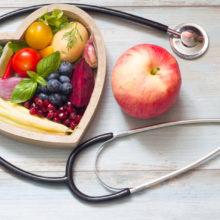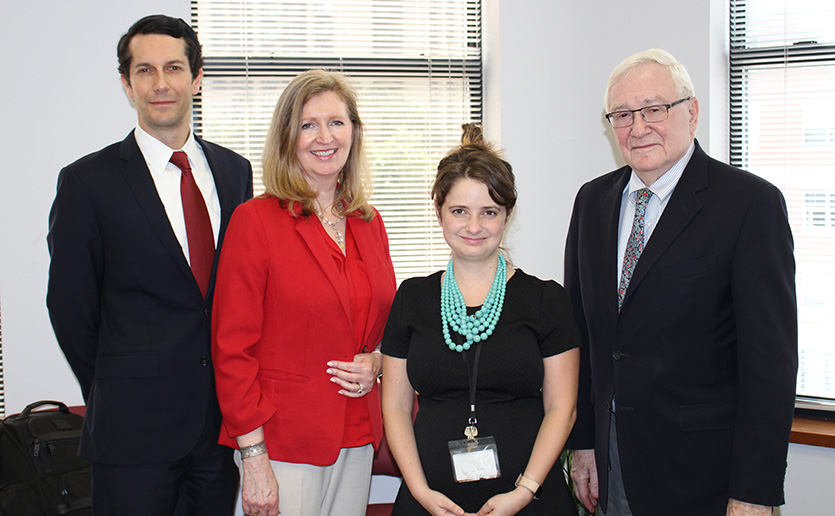We are conditioned to fear aging, but it is a certainty for those lucky enough to experience it. Instead of searching out strategies to stay forever young – an exhausting and ultimately impossible task – we can focus on aging well. And what we eat can play a role in how quickly we age, particularly when it comes to brain health.
Studies have correlated certain diet patterns with delaying brain aging up to seven years, showing benefits in functions like memory and speed.
Studies have correlated certain diet patterns with delaying brain aging up to seven years, showing benefits in functions like memory and speed. Keep in mind that research involving diet and brain function often involves participants in their 70s and beyond. (This allows us to examine the natural decline in mental processing that comes with getting on in years.) But this isn’t an excuse to put off eating salads until later in life. In fact, there are a variety of reasons to start such habits early, with benefits ranging from reduced cancer risk to improved heart health.
So, what should we be eating to better support our brains?
Aging Well with Produce
Vegetables, especially leafy ones, and berries have been shown to be protective. This may be partly related to their flavonoids, plant chemicals that fight disease-promoting actions in our bodies. In one study, individuals with the lowest flavonoid intake had a 50% higher risk of developing dementia over a five-year period than those with greater intakes.
Anthocyanidins are specific flavonoids found in deep purple, pink, and blue-colored produce. Consuming them is associated with slower cognitive decline. Some studies specifically highlight strawberries and blueberries as beneficial.
Diet questionnaires are often limited in scope, so we can only hypothesize on other plants that might also be helpful for aging well. Radishes don’t have the same allure as, say, a strawberry parfait, but they beat out the berries on their content of at least one type of anthocyanidins.

• Bring on the (Healthy) BBQ!
• You Can Stop Dieting
• How to Detox Through Diet
Other foods with respectable amounts include purple grapes, red cabbage, raspberries, blackberries and black currants. This might also be an excuse to experiment with those purple-hued potatoes and cauliflower heads found at farmers’ markets and some grocery stores.
Berries and Greens
If the thought of eating an amethyst-colored potato salad doesn’t move you, standard green leafy vegetables contain flavonoids as well. They also offer nutrients like folate and vitamin E, which have also been linked to supporting brain health. Include options like kale, collards, spinach and lettuce at least six times per week – nearly one daily serving – plus at least one other vegetable each day.
As for the berries? Eating them twice a week may offer benefits. Remember that this research was done on older adults, who typically have lower calorie needs. So, if these amounts seem low, you may very well benefit from increasing your intake further.
Diet and Disease Prevention
Swapping out foods can make a difference too. Replacing red meat with marine and plant-based sources is wise. Having fish once a week and legumes, like beans, lentils and edamame (soybeans), three times a week has been shown to be protective.
If you enjoy red meat, try not to give it an appearance at the table more than three times a week. Red meat includes ham sandwiches and pork tenderloin, as well as the usual suspects like hot dogs, bacon, sausage and hamburgers.
While we can’t help getting older, we can make diet changes to better support our brains as they age.
As for fish, any fresh variety that escapes the fryer will do, as will canned tuna. If you like fatty fish like salmon, sardines, and mackerel, you are in luck – they have high levels of omega-3 fats. Docosahexaenoic acid (DHA) is an omega-3 fatty acid found in seafood, but it’s also a significant structural component of our brains and has been shown to reduce the plaque formation found in Alzheimer’s disease.
Another meaningful change would be switching to olive oil as your primary fat and limiting butter or margarine to less than a tablespoon per day. Opting for nuts as a snack is helpful too, especially if you substitute them for fried foods and pastries, which are much higher in saturated fat. (Regularly eating too much unhealthy fat may contribute to dysfunction of your brain’s protective barrier.)
While we can’t help getting older, we can make diet changes to better support our brains as they age. These are strategies that are good to employ any time, but making changes now might also make you wise beyond your years.

Emily Gelsomin, MLA, RD, LDN, is a senior clinical nutrition specialist at Massachusetts General Hospital. As a registered dietitian, she counsels on medical nutrition therapy on an outpatient basis and is co-director of Be Fit, the hospital’s employee wellness program.
Jointly sponsored by The Clubs at Charles River Park and MGH Nutrition and Food Services, the 10-week program focuses on helping participants “Be Fit and Eat Right.” Every ten weeks, employees from different departments within the hospital compete with each other as they make a commitment to Be Fit. Through the creation of a social environment at the workplace, participants are supported to make progress in personal lifestyle changes with the help of a unique support system that includes a dedicated nutritionist and personal trainer.
Be Fit strives to create a milieu of wellness that extends beyond the 10-week curriculum by offering features to those who are not part of the intensive program. This includes the creation of Choose Well, Eat Well, a rating system designed to help both employees and patients increase awareness of healthy choices at retail eateries within the hospital. They also publish a timely nutrition tip each month.





